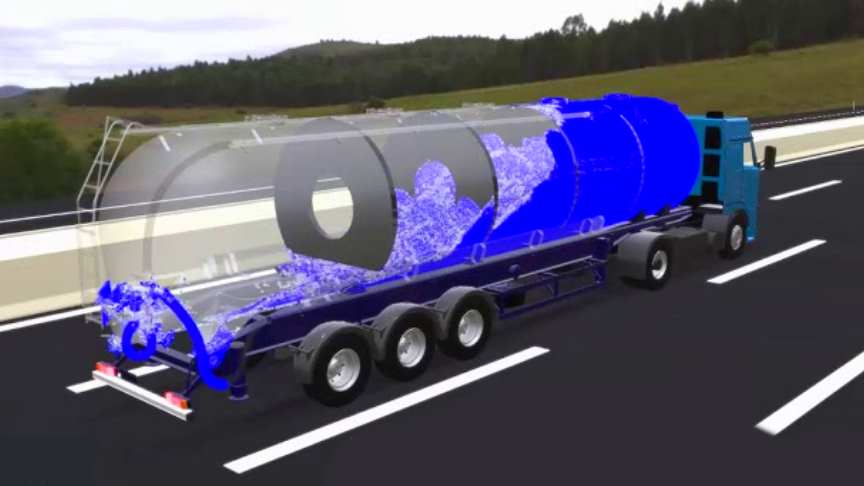If you’ve ever pulled a tanker trailer, you’ve experienced the sloshing effects.This aspect of hauling liquid loads can be very intimidating at first for the driver. Some tankers have Bulkheads or baffles and some don’t.
source/image(PrtSc): Scanscot Technology AB
Liquid sloshing strongly influences the directional dynamics and safety performance of highway tank vehicles in a highly adverse manner.video by: Scanscot Technology AB
Hydrodynamic forces and moments arising from liquid cargo oscillations in the tank under steering and/or braking maneuvers reduce the stability limit and controllability of partially-filled tank vehicles.video by: Scanscot Technology AB
Anti-slosh devices such as baffles are widely used in order to limit the adverse liquid slosh effect on directional performance and stability of the tank vehicles.
Advertisement
An except from MANCOMM’s Commercial Motor Vehicle Operator Instruction Series “Tankers” video which explains the types of tankers and how the liquid cargo acts as the vehicle is moved.There are 3 types of Tankers. Bulkheads, Baffles, and Smoothbores. That is a good video to understand and to see the difference of fuel tanks.video by: CouchToons
Since most of the time, tankers are carrying dangerous liquid contents such as ammonia, gasoline and fuel oils; therefore stability of partially-filled liquid cargo vehicles is very important. Optimizations and sloshing reduction techniques in fuel tanks such as elliptical tank, rectangular, modified oval and generic tank shape have been performed in different filling levels using numerical, analytical and analogical analyses./wikipedia











